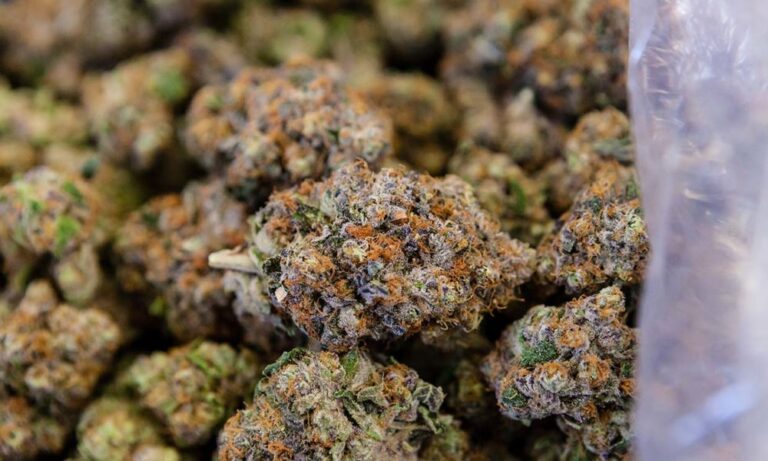
[ad_1]
Arguing over which strains of cannabis are the best is a time-honored tradition. In good company and armed with some basic knowledge on the seemingly endless bounty of cannabis varietals now available, the quest to defend your chosen strain as the best of the bunch is often a largely subjective exercise. But a fun one nonetheless. By contrast, a conversation on which cannabis strains deserve to be considered essential in an overall survey of the plant’s long, strange history is a different matter entirely.
While there are unquestionably many candidates worthy of consideration, telling the story of weed through but a handful of its most seminal specimens is a challenge that quickly yields some obvious answers. Even if your favorite strain is not among the five examples highlighted below, it is likely that one of these featured options is a genetic cousin, forbearer, or offspring to the strains you hold nearest and dearest.
Thus, consider these selections a series of strain stepping stones that collectively offer a brief but pertinent overview of just far cannabis has come — and where it may be headed next.

Panama Red
Before cultivators began breeding cannabis to create new crosses, consumers were smoking exclusively what is known as landrace strains. These varietals were often named for the geographic area in which they naturally grew, which is how we got Panama Red. This classic of the industry is a pure sativa that would go on to became a household name for pot fans in U.S. in the late 1960s, mostly for being widely available at a time when few strains were even on the market. Known for its lengthy flowering time (often at least 11 weeks), the desire to combine the effects of landrace strains with the shorter flowering cycles of cannabis originating from Afghanistan and other similar climates kicked off what would ultimately become a cross-breeding revolution.
Northern Lights
When it comes to hybrids, the story can’t be told without including Northern Lights. A cross of multiple Afghani landrace strains, Northern Lights is revered for its potency and quick, bountiful yield. By the time we arrive at Northern Lights #5 (so named for literally being the fifth manifestation of the strain), the recipe had evolved to also include genetics from a Thai landrace sativa. The result was the addition of both a fruity taste and a more notably cerebral high for consumers. Reaching its peak of popularity in the early 90s, Northern Lights — and the #5 varietal specifically — is renowned as a sturdy, reliable strain that would also feature prominently in the next phase of the cannabis story, wherein hybrids were at last crossed with one another. And the sky truly became the limit.

OG Kush
The story of cannabis often takes the West Coast as its setting, and for good reason. Encompassing California and its famed Emerald Triangle, as well as pivotal neighboring states like Oregon and Washington, weed’s evolution was one that largely took place where the U.S. meets the Pacific Ocean. Perhaps no strain better exemplifies this journey than OG Kush. Forever shrouded in mysterious origins, the best guess of those eager to trace its lineage suggest it was a cutting smuggled from the West Coast to Florida and back again that ultimately yielded this iconic example of cannabis at its finest. Forever enshrined in the lyrics of classic rap songs and still namechecked today as a titan of the field, what is known is that we have a cultivator in Los Angeles known simply as Josh D. to thank for ushering the market into a hybrid frenzy that’s never truly dissipated.

White Widow
Rivaling OG Kush in terms of name recognition is another hybrid that rose to prominence in the ’90s: White Widow. Named for its buds laden with white and crystal resin, there is no actual venom to worry about, however, a highly-potent experience is all but guaranteed from this Netherlands-born heavy-hitter. Derived from a cross between Brazilian indica and South Indian sativa landraces, White Widow has long served as a staple of Dutch coffee shops. Furthermore, the desirable effects of White Widow — often described as a mix of euphoria and energy — makes it no surprise that this strain would soon be utilized to create a host of popular offspring strains, including White Russian and Blue Widow.

Gelato
Turning our eye back to the West Coast, the story of modern cannabis is rather perfectly encapsulated by the balanced hybrid known as Gelato. Having gone through multiple incarnations, all courtesy of San Francisco’s Cookie Farm Genetics — led by famed cannabis breeders Mr. Sherbinski and Jigga — phenotype #33 is affectionately (if unofficially) nicknamed “Larry Bird” in reference to the famed Celtics basketball player’s jersey number. Featuring a cross between two already famed hybrids (Thin Mint Girl Scout Cookies and the mouth-wateringly fruity indica Sunset Sherbert), Gelato served a pivotal role in establishing the Bay Area as a new headquarters for innovative, legendary cannabis strains. Still popular today, the amount of strains that owe a debt of recognition to this modern marvel are simple too numerous to name.
As for what comes next, the answer is as simple as paying a visit to your nearest neighborhood dispensary. New and incredible advents in the strain game are arriving seemingly every day, making the strains listed above but a starting point for any cannabis connoisseur on a quest to touch (and taste) all the magic of the cannabis rainbow.
[ad_2]
Source link
